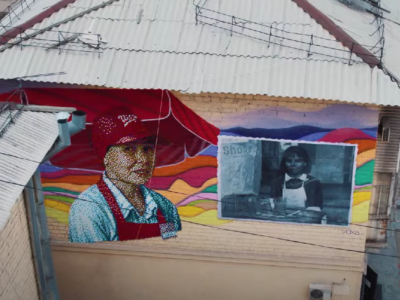Tim Lynch, an American security contractor in Afghanistan, used to work with the now-fired security guards at the U.S. Embassy in Kabul. He says:
“The problem with the current guard force is that they are on a sh** contract. Ignore the money value published in the papers – that number is for five years executed at full value which is impossible to do . Armor Group North America is losing big money on that job and they are about to lose a lot more. I was asked by a few companies to consult on their bids for it back in 2006 and my answer was always the same – don’t bid because if you win you’ll lose money. There were requirements in the contract that could not be filled”.
Even if western contracts for the Embassy seem daunting, there remains a curious sense of excess in much of Kabul. Hameesha writes of her organization trying to find a new office building outside the gaudy, rich districts of the capital, and how incredible some of the buildings are:
Another [house] came with furnishings that featured some of the best buzkashi and persian miniature artwork and nooristani woodwork, but the owner had an aversion to renting it out for office space. he preferred for it to be an ambassador’s residence. all houses came with standard issue manicured lawns, rich garden of roses and patonias, double-glass panelled vacuummed windows (ideal insulation for kabul winters), complete internet installations or at the very least lan wiring to all rooms, plenty of parking, and the ubiquitous fences over the walls complete with concertina wiring. one had an automated fire alarm and sprinkler system (unheard of in Kabul) and central heating and climate control mechanisms.
The relative decadence of Kabul makes for a sharp contrast with the goings-on in other areas of the country. Kabul Perspective notes that in the south of Afghanistan, the counter-narcotics campaign is failing:
Most poppy crops are cultivated in five southern militancy-hit provinces where Taliban have been challenging the writ of the Afghan Government making a strong comeback after they were ousted by the US-led forces. Over 50% of the total production is just cultivated in Helmand province, the heartland of Taliban militancy stronghold.
Similarly, Danger Room notes that in Kandahar, a drug raid netted a bit more than some drugs and maybe a smuggler or two:
The operation, which took place on July 18 in the Argestan District of Kandahar Province, resulted in the arrest of Border Police Commander Shar Shahin. The operation kicked off after Shahin was lured to Kandahar Airfield, where he was placed under arrest, along with five bodyguards. Once the mission was triggered, a task force that included a DEA Foreign-deployed Advisory and Support Team and members of Afghanistan’s National Interdiction Unit, set out for its objective, a compound suspected of being used as a drug storage point.
Things in Kandahar remain tense. Alex Strick van Linschoten, one of the only independent writers living full-time in Kandahar, writes on his Twitter feed that, weeks after the election's violence in the city, there are still shoot-outs between western forces and local militants. He even posted video:
Trouble is not limited to the south of the country. Just east of Kabul, the second-highest intelligence official for the country, Dr. Abdullah, was killed by a suicide bomber in Laghman province. Tim Lynch has posted some pictures of the aftermath in Mehtar Lam.






